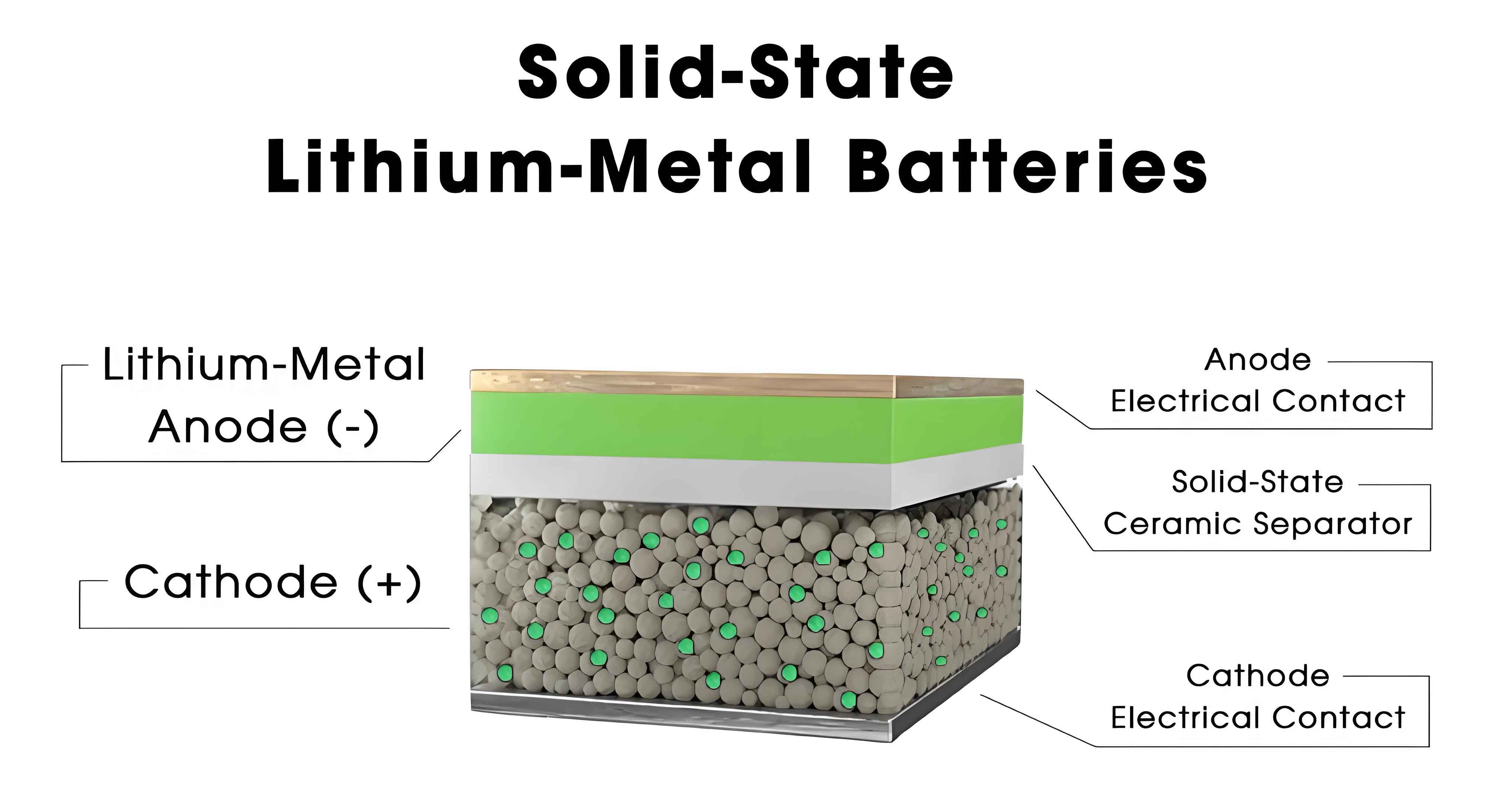The rapid evolution of energy storage technologies has positioned solid-state batteries as a cornerstone of next-generation electrification. With global markets responding fervently to advancements in this domain, the solid-state battery sector has demonstrated remarkable growth, as evidenced by recent stock surges exceeding 1% in key indices. This article delves into the technical foundations, market trends, and future projections of solid-state batteries, supported by analytical frameworks, tables, and formulas.

1. Technical Fundamentals of Solid-State Batteries
Solid-state batteries replace traditional liquid electrolytes with solid counterparts, enabling superior energy density, safety, and longevity. The energy density (EE) of a battery can be modeled as:E=σ×V×AE=σ×V×A
Where:
- σσ = Ionic conductivity of the solid electrolyte (S/cm)
- VV = Operating voltage (V)
- AA = Active material area (cm²)
Current solid-state battery prototypes achieve ionic conductivities exceeding 10−310−3 S/cm, rivaling liquid electrolytes. Key materials include sulfide-based (e.g., Li22S-P22S55) and oxide-based (e.g., Li77La33Zr22O1212) compounds.
Table 1: Comparison of Battery Technologies
| Parameter | Liquid Li-ion | Polymer Electrolyte | Solid-State Battery |
|---|---|---|---|
| Energy Density (Wh/kg) | 250–300 | 300–350 | 400–500 |
| Safety | Moderate | High | Exceptional |
| Cycle Life | 1,000 | 1,200 | 2,000+ |
| Cost ($/kWh) | 120–150 | 180–220 | 250–300 |
2. Market Trends and Key Players
The solid-state battery market is projected to grow at a CAGR of 30% from 2023 to 2030, driven by electric vehicle (EV) adoption and renewable energy storage demands. Factorial Energy, a frontrunner, has secured partnerships with automakers to commercialize its solid-state battery technology by 2025. Their patented FEST™ (Factorial Electrolyte System Technology) claims a 50% increase in energy density over conventional Li-ion batteries.
Table 2: Leading Companies in Solid-State Battery Development
| Company | Technology Focus | Target Commercialization | Funding (2023, $M) |
|---|---|---|---|
| Factorial Energy | Sulfide Electrolytes | 2025 | 320 |
| QuantumScape | Oxide Electrolytes | 2026 | 480 |
| Solid Power | Hybrid Electrolytes | 2027 | 210 |
3. Challenges and Breakthroughs
Despite their promise, solid-state batteries face hurdles such as interfacial resistance (RinterfaceRinterface) between electrodes and electrolytes. This resistance can be approximated using the Arrhenius equation:Rinterface=R0×e−EakTRinterface=R0×ekT−Ea
Where:
- R0R0 = Pre-exponential factor
- EaEa = Activation energy (eV)
- kk = Boltzmann constant
- TT = Temperature (K)
Recent advancements in nanostructured electrodes and thin-film deposition have reduced RinterfaceRinterface by 40%, enhancing charge/discharge rates.
4. Economic and Environmental Impact
The transition to solid-state batteries could reduce EV manufacturing costs by 15–20% by 2030 due to simplified thermal management systems. Additionally, their non-flammable nature mitigates risks of thermal runaway, quantified by the safety index (SS):S=Thermal StabilityEnergy Density×Cycle LifeS=Energy Density×Cycle LifeThermal Stability
Higher SS values correlate with safer batteries, making solid-state batteries ideal for aerospace and grid storage applications.
5. Future Projections and Policy Implications
By 2025, solid-state battery production is expected to reach 10 GWh annually, driven by government incentives and R&D investments. Policy frameworks such as the U.S. Advanced Battery Consortium (USABC) aim to subsidize 30% of manufacturing costs for solid-state battery gigafactories.
Table 3: Global Production Capacity Forecast (GWh)
| Region | 2025 | 2030 | CAGR |
|---|---|---|---|
| North America | 2.5 | 12.0 | 37% |
| Asia-Pacific | 6.0 | 28.0 | 36% |
| Europe | 1.5 | 8.0 | 40% |
6. Conclusion
The ascendancy of solid-state batteries heralds a transformative era for energy storage. With unparalleled energy densities, safety profiles, and scalability, this technology is poised to redefine industries from automotive to renewable energy. Collaborative efforts among academia, industry, and policymakers will be pivotal in overcoming residual technical and economic barriers, ensuring solid-state batteries realize their full potential by 2025 and beyond.
